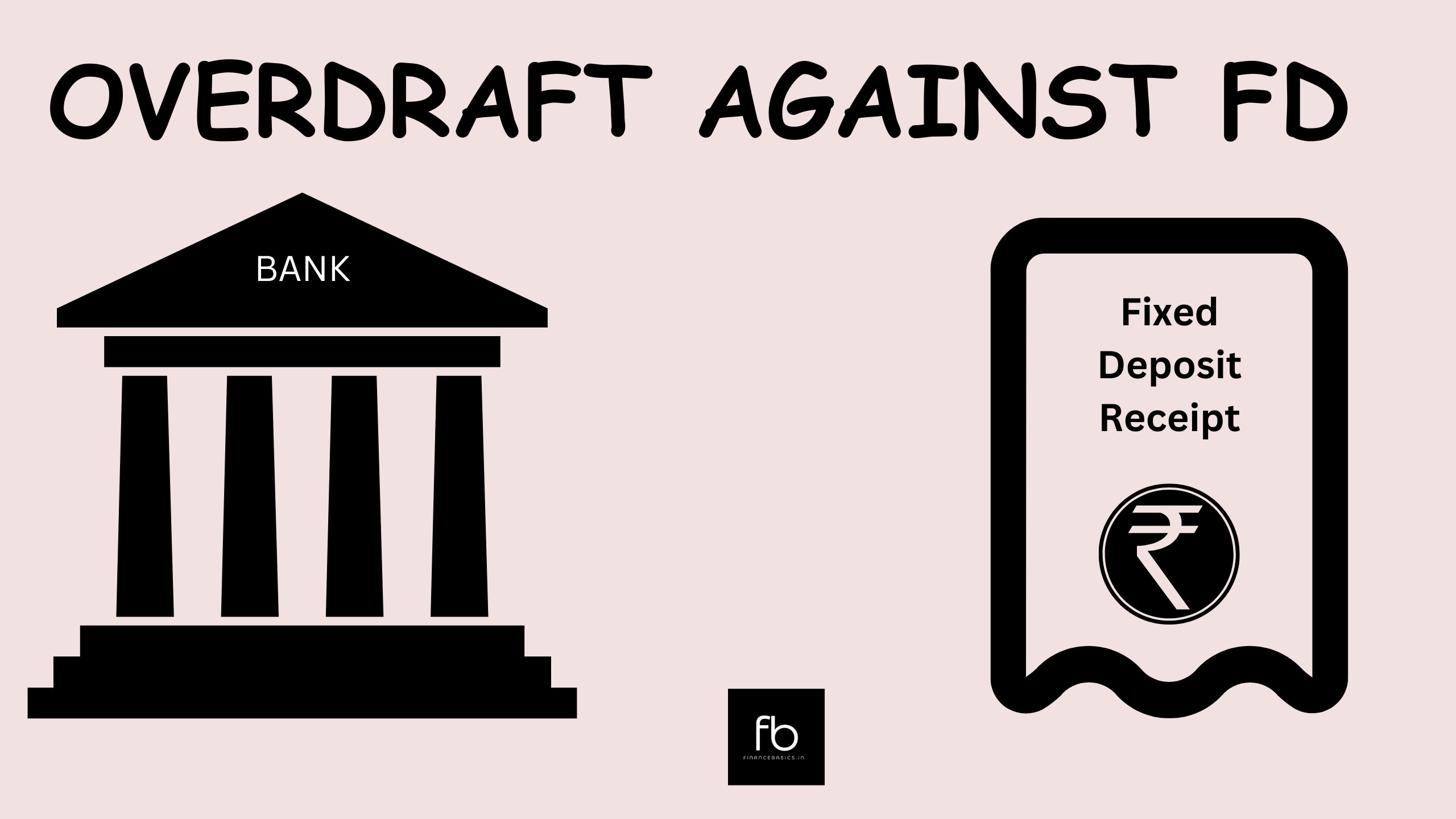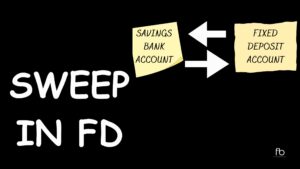Table of Contents
A very cost effective credit line is available in the form of overdraft against FD. Not all of us are aware of it and not everyone uses it properly. Today we will read all about overdraft against FD and how it can be leveraged to meet our big ticket expense in our daily life.
What is overdraft against FD?
To be able to utilize this product you first need to create a fixed deposit (FD). Lets say you created a fixed deposit of Rs 50,000 in your bank. You want to now opt for an overdraft facility. Generally, the bank will provide you 90% of the FD amount as an overdraft. This means you can have a loan of Rs 45,000 in our example. The interest on the overdraft is generally 1% to 2% higher than the interest on FD. Also the interest is calculated daily.
Suppose you take overdraft of Rs 30,000. You repay the amount after 60 days. The bank will calculate interest only for the time period you utilized the overdraft (i.e. 60 days). Overdraft against a FD is a secured overdraft. The bank already has a security in the form of fixed deposit receipt.
Why use a Overdraft against FD?
- There are no EMI or monthly repayments for the utilized overdraft amount. You can repay the money as and when you have it. You can pay it over a period of time or in lumpsum.
- There is zero processing fee to avail overdraft against FD facility.
- There are no pre-payment penalties. It is a very flexible repayment product.
- You have to pay interest only on the amount of overdraft you use.
- The interest is calculated on daily basis. If you use the overdraft amount only for 20 days and repay the entire amount on day 21, then you have to pay interest only for the 20 days.
- As the interest on the overdraft is only 1% to 2% more than the FD interest, you technically pay interest at 2% only. This is the cheapest credit line available in the market.
- The overdraft facility gets renewed when the fixed deposit is renewed.
- Overdraft facility is available on individual and jointly owned FD also. However, it is not available for FD in the name of minor. It is also not available on 5 year tax free FD’s.
How to use an overdraft against FD effectively?
Let us understand with an example. Tara has a fixed deposit of Rs 200,000. She has opted for an overdraft facility against the fixed deposit. Tara wants to pay school fees of her two children which amount to Rs 90,000. Tara pays the school fees out of the overdraft facility. She then repays the entire amount over a period of 3 months.
After some days, Tara goes shopping for kitchen appliances. She buys a cooking range for Rs 40,000, a dishwasher for Rs 50,000 and a blender for Rs 10,000. She makes payments from her overdraft facility for all these purchases. So she utilizes Rs 100,000 out of her overdraft limit. When she receives her bonus next month, Tara repays Rs 60,000. She repays the remaining Rs 40,000 over the next 2 months.
With the help of the overdraft facility, Tara is able to meet all her expenses. Also she can pace the repayments as per availability of funds. She also paid minimum interest. Had Tara used a credit card she would have had to pay the entire amount in the next billing cycle or opt for no cost EMI’s. If she had taken a personal loan, Tara would have had to pay large interest costs at around 11% to 25% per annum.
Conclusion
To conclude, overdraft facility against FD is a fantastic tool to manage everyday money requirements, if used wisely. You always have ready funds available in the event of any emergency like hospitalization, medical treatment etc. If you can maintain financial discipline while using and repaying the overdrawn amounts, you can save yourself a lot of money and stress and meet all your financial needs. Try and opt for an overdraft facility in a public sector bank, as these banks generally provide overdraft facilities which are more affordable to the customer.



